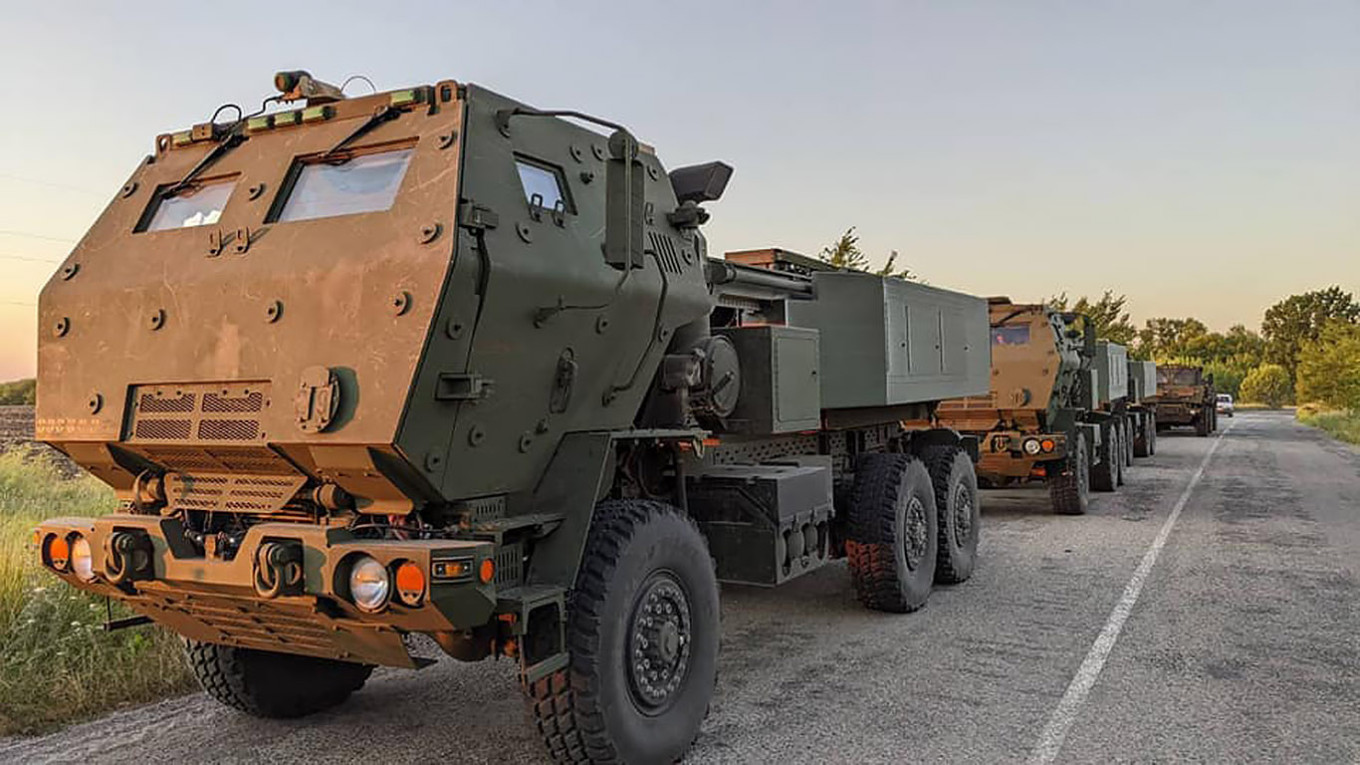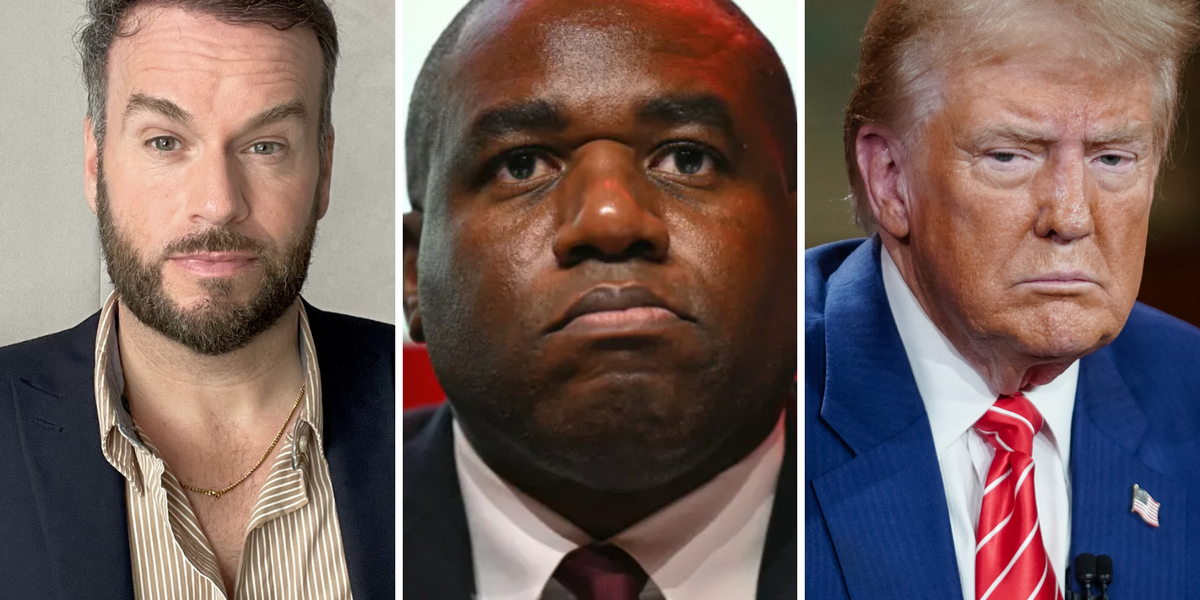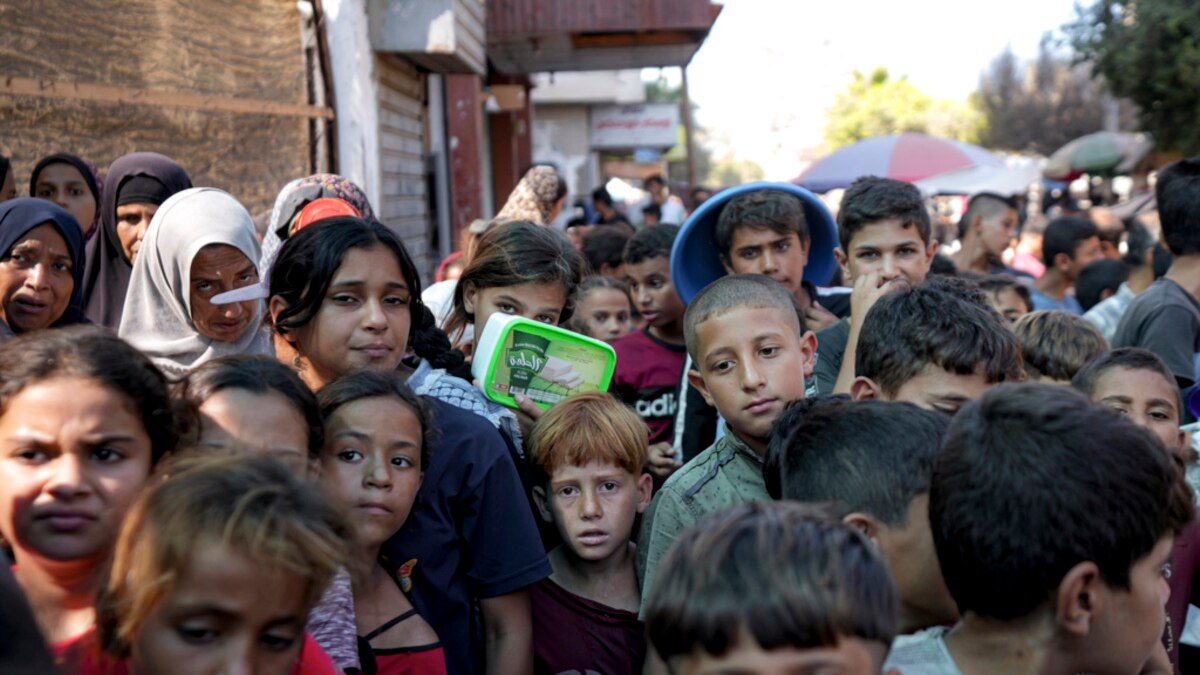The United States has authorized Kyiv to use U.S.-donated long-range missiles to strike targets inside Russia nearly 1,000 days into the Kremlin’s full-scale invasion of Ukraine.
Washington’s change of tone is likely to prompt Kyiv’s other allies to ease restrictions on the use of their weapons. American Army Tactical Missile Systems (ATACMS) are particularly important to Ukraine because of their hypersonic speed, accuracy, range and ability to maneuver to avoid surface-to-air missiles.
Though the move marks a major shift in U.S. policy — as Washington has long rebuffed Ukraine’s calls to hit outside its borders — it is still a long way from giving Kyiv carte blanche. The New York Times reported that the weapons are likely to be used to defend Ukrainian forces in Russia’s Kursk region, where they face a Russian counteroffensive bolstered with North Korean soldiers and weapons.
Though analysts welcomed the move, many voiced concerns that it came too late and was too limited in its ambition by fear of escalating the conflict. Intelligence analyst Ryan McBeth told The Moscow Times that it fit in with Washington’s “shameful” track record of giving Ukraine “just enough to lose but not enough to win.”
“When a man’s house is on fire, you’re not helping that much if you hand them a hose and only give them enough water to make the fire a little damp. That’s pretty much what we did with our current policy on ATACMS,” he said.
2022
May 31: President Joe Biden sets out what the U.S. “will and will not do in Ukraine” as weapons deliveries announced
In an opinion article for The New York Times, Biden said that while the U.S. would send Kyiv weapons to defend its territory, it was not “encouraging or enabling Ukraine to strike beyond its borders.”
The $700 million package of military aid Washington announced that day included the High Mobility Artillery Rocket System (HIMARS) with a range of 77 kilometers.
June 5: Putin warns U.S. against sending Ukraine longer-range weapons
President Vladimir Putin warned that Russia would strike targets in the West if they donated more advanced weaponry to Ukraine. Moscow has not, to date, followed through on this threat.
June 23: First HIMARS arrive in Ukraine
Two days later, Ukraine used them to hit military targets behind the front line in occupied Ukraine, including killing over 40 soldiers in a military base in Izium.
July 8: Washington announced plans to send four more HIMARS to Ukraine, but barred them from being used on Russian territory
HIMARS continued to be shipped to Ukraine into 2024.
Sept. 12: Ukraine requests ATACMS
As Ukraine pushed deeper into Russian-occupied areas of the Kharkiv region, The Wall Street Journal reported that Kyiv asked the U.S. for ATACMS systems, which have a range of up to 300 kilometers.
Sept. 15: Russia warns U.S. would be considered a “party to the conflict” if it donated longer-range weapons to Ukraine
 Ukrainian HIMARS on combat mission.
Mil.gov.ua
Ukrainian HIMARS on combat mission.
Mil.gov.ua
2023
May 11: Britain becomes the first nation to send long-range weapons
Each £2.2 million ($2.7 million) Storm Shadow missile has a range of up to 250 kilometers, putting cities like Rostov-on-Don and Voronezh within range. The Russian Ambassador to Britain described the decision as a “big escalation.” France would go on to donate its own version of the missile – SCALP – to Ukraine.
Two days later after London’s announcement, Ukraine used a Storm Shadow missile to strike a Russian military headquarters in the occupied city of Luhansk. On June 12, Russian Major General Sergey Goryachev was killed in a Storm Shadow on occupied Crimea.
September: Storm Shadows rain down on Crimea
Russia officially considers Crimea its own sovereign territory following the 2014 annexation. But Ukraine used Storm Shadow missiles to devastate the Black Sea Fleet, headquartered in the Crimean city of Sevastopol.
The Rostov-na-Donu and Minsk submarines were heavily damaged by an attack on Sept. 13. On Sept. 22, three missiles struck the Russian navy’s Black Sea Headquarters, killing 34 officers including the fleet’s senior commander Viktor Sokolov, according to Ukrainian sources.
Oct. 17: Ukraine receives and uses its first ATACMS
Over a year after Kyiv’s request and a month after Biden greenlit the move, the United States delivered a “small number” of ATACMS, albeit with a more limited range of 160 kilometers.
Putin called the move “another mistake by the United States.” In the same speech, he announced that Russia would deploy two hypersonic missile-armed fighter jets to the Black Sea to monitor two American carrier strike groups off the coast of Israel.
2024
April 2: Ukraine uses drones to strike two industrial sites 1,300 kilometers from the front line
While the West held off on allowing Ukraine to use donated weapons to strike Russia, Kyiv launched domestically produced drones to target Russia’s lucrative fossil fuel industry, hoping to choke off revenues for Moscow and stop the supply of fuel to Russian forces. The furthest of these strikes hit the republic of Tatarstan.
April 20: U.S. passes $61 billion military aid package after six months of partisan infighting in Congress
The delay allowed Russia to intensify its bombardment of Ukrainian cities, energy infrastructure and frontline positions with missiles, drones and glide bombs.
The package included a requirement to send more ATACMS to Ukraine.
May 30: Ukraine can strike some targets on Russian soil with U.S. weapons – but not ATACMS
Washington quietly permitted Kyiv to use U.S.-donated HIMARS for counterfire purposes across the border from Kharkiv, which had been pounded all summer with glide bombs launched from inside Russian territory.
However, the ban on using long-range ATACMS remained in place.
July 10-11: Britain appears to budge, but backtracks
Newly elected British Prime Minister Keir Starmer told journalists that it was up to Ukraine to decide how to use Storm Shadow missiles to strike targets inside Russia.
The next day, the British government clarified that the country’s policy had “not changed.” The missiles contain components manufactured in the U.S., meaning Washington would need to authorize their use on Russian territory.
Aug. 6: Ukraine launches an incursion into Russia’s Kursk region
Ukrainian forces advanced rapidly into Russia’s internationally recognized territory. By Aug. 19, they were in control of 1,250 square kilometers and over 92 settlements.
Aug. 10: Ukraine uses U.S.-donated HIMARS to destroy a Russian convoy in the Kursk region in one of the deadliest attacks since the start of the war
 President of Ukraine Volodymyr Zelenskyy began his visit to the United States by visiting the Scranton Army Ammunition Plant on Sept. 22, 2024.
President Of Ukraine / flickr
President of Ukraine Volodymyr Zelenskyy began his visit to the United States by visiting the Scranton Army Ammunition Plant on Sept. 22, 2024.
President Of Ukraine / flickr
Aug. 19: Zelensky requests permission to use long-range missiles to strike targets inside Russia
Zelensky told an audience of Ukrainian ambassadors that the lack of authorization prevented Ukraine from halting Russia’s counteroffensive.
By Aug. 26, the Washington-based think tank the Institute for the Study of War said they had identified 225 military sites in Russia – including airfields and military bases – within range of Ukraine’s ATACMS.
Sept. 13: U.S. National Security spokesperson John Kirby says the U.S. has no plans to change its policy
Sept. 25: The Kremlin announces an updated nuclear doctrine in response to Ukrainian attacks deep inside Russia
The change would allow Moscow to use nuclear weapons to respond to an attack by a non-nuclear state supported by a nuclear state – widely seen as a reference to Ukraine and its Western allies.
However, analysts cautioned against overreacting to Moscow’s threat. Heather Williams at the Center for Strategic and International Studies described the announcement as another round of “nuclear bullying” seeking to deter the West from supporting Ukraine.
Nov. 18: The French foreign minister says Paris was open to allowing Ukraine to use French-donated SCALP missiles to strike targets in Russia as Kremlin rails against Washington’s decision
Kremlin spokesman Dmitry Peskov warned that the United States would trigger a “significant new round of escalation.” Ukraine plans to carry out its first long-range attacks into Russia “in the coming days,” according to Reuters.
A Message from The Moscow Times:
Dear readers,
We are facing unprecedented challenges. Russia's Prosecutor General's Office has designated The Moscow Times as an "undesirable" organization, criminalizing our work and putting our staff at risk of prosecution. This follows our earlier unjust labeling as a "foreign agent."
These actions are direct attempts to silence independent journalism in Russia. The authorities claim our work "discredits the decisions of the Russian leadership." We see things differently: we strive to provide accurate, unbiased reporting on Russia.
We, the journalists of The Moscow Times, refuse to be silenced. But to continue our work, we need your help.
Your support, no matter how small, makes a world of difference. If you can, please support us monthly starting from just $2. It's quick to set up, and every contribution makes a significant impact.
By supporting The Moscow Times, you're defending open, independent journalism in the face of repression. Thank you for standing with us.
Continue
![]()
Not ready to support today?
Remind me later.

 By The Moscow Times | Created at 2024-11-18 13:00:22 | Updated at 2024-11-18 15:35:11
2 hours ago
By The Moscow Times | Created at 2024-11-18 13:00:22 | Updated at 2024-11-18 15:35:11
2 hours ago








